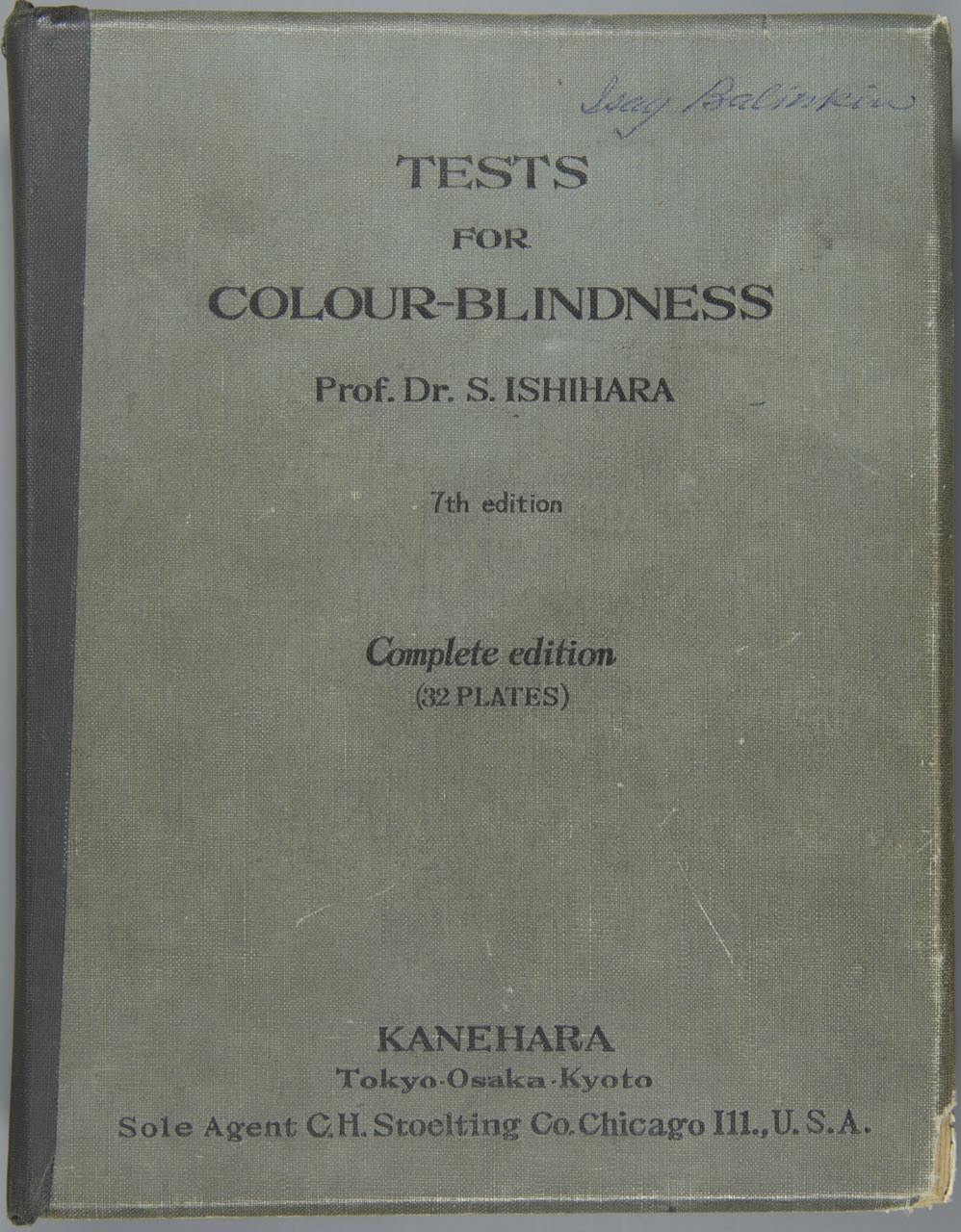
LIBRARIES
The series of plates designed as tests for colour-blindness
Shinobu Ishihara , 1936

Almost a century ago, Dr. Shinobu Ishihara devised the most well-known and popular color blindness tests to date. Ishihara developed these as part of a challenge to screen Japanese military recruits for abnormalities of color vision. The tests consist of colored dotted plates embedded with images of numbers or paths and are still used by optometrists and ophthalmologists worldwide.
Condition and treatment: This is an early 20th century case binding containing 32 plates that are mounted non-adhesively within an accordion format textblock. The corners of the plates are slid into open slots along the corners of accordion folded pages. Due to the weight of all the plates, the page containing the second plate is torn and crushed along the fore edge and is in danger of fully detaching. Prior repairs along the joints of the cover are no longer serving their purpose and have become detached and re-taped along the inside of the spine with pressure sensitive tape. Conservation staff will repair the damaged textblock, remove prior repairs, and reattach the case binding along the joints. The binding will be housed in a cloth covered clamshell with an integrated cradle.
Adoption Type: Preserve for the Future
Library: Geology-Mathematics-Physics Library
The series of plates designed as tests for colour-blindness
Adopted by
Anonymous

